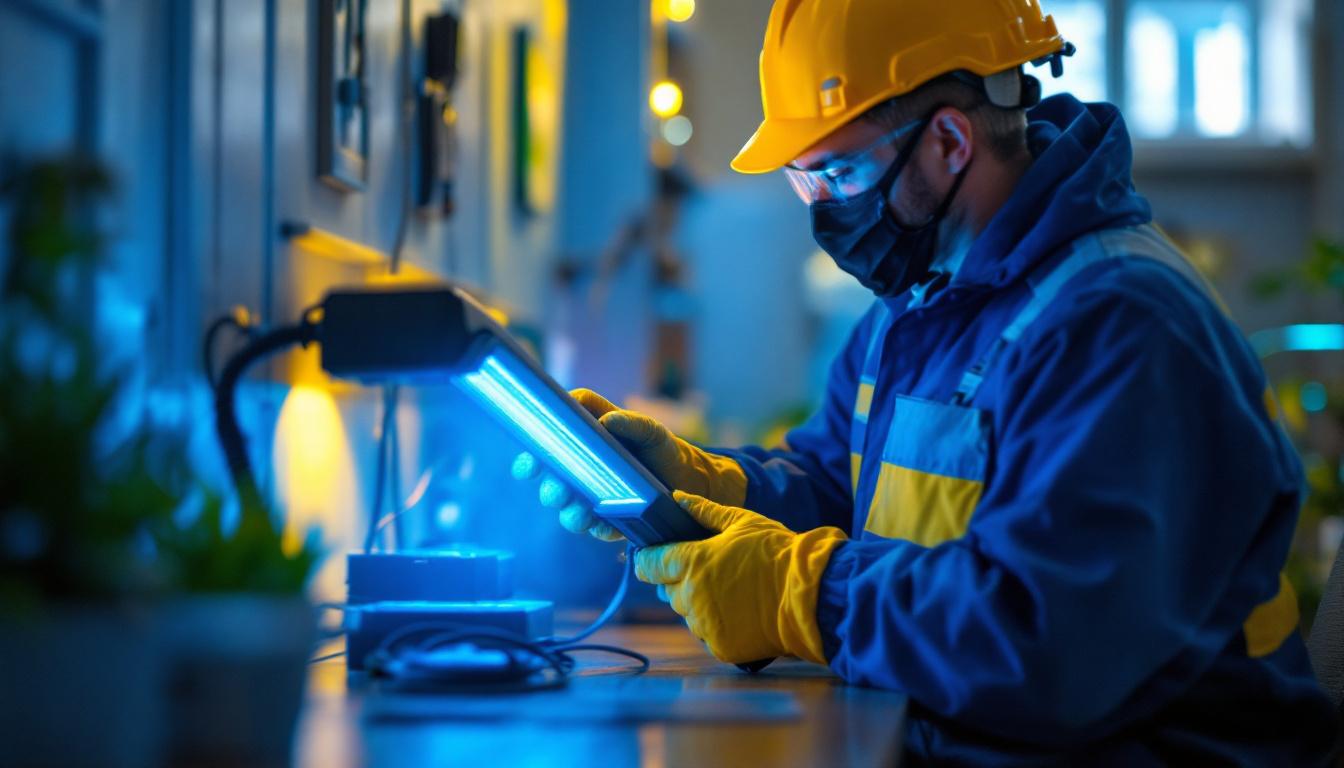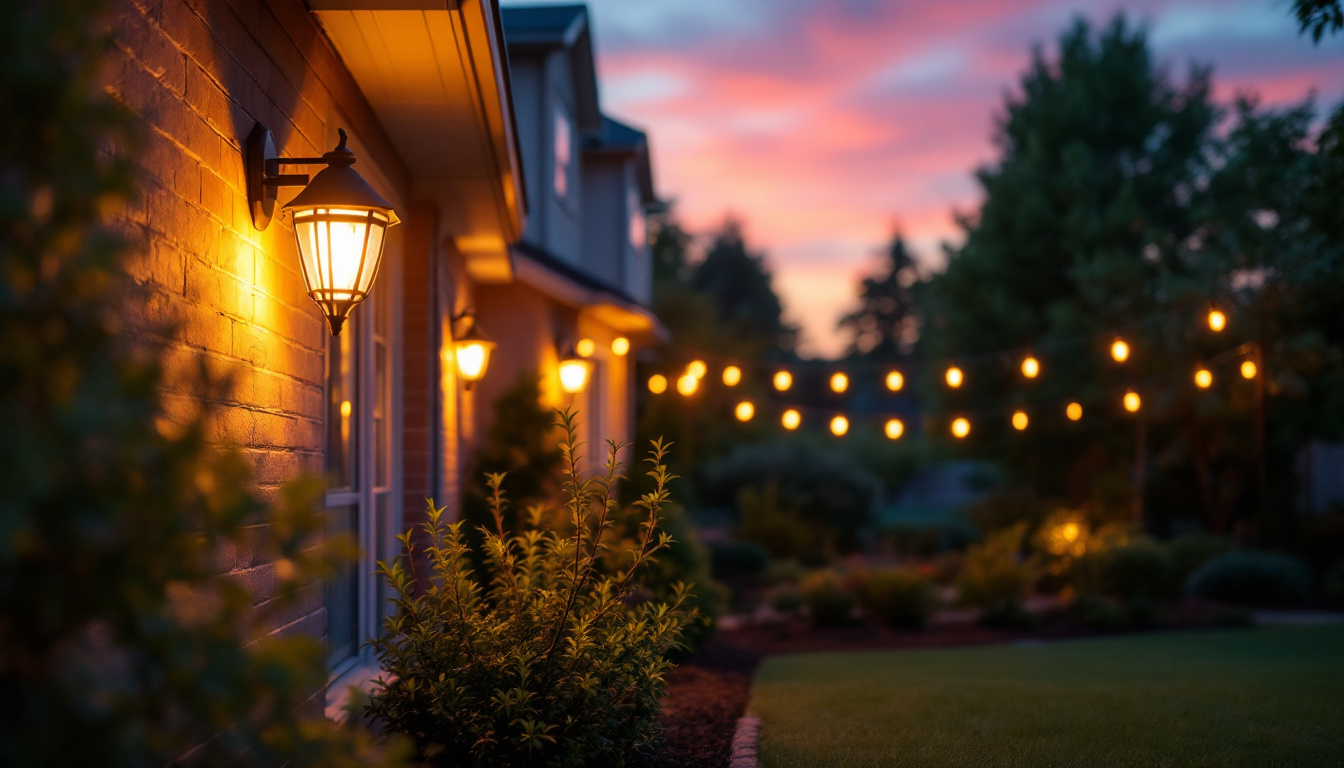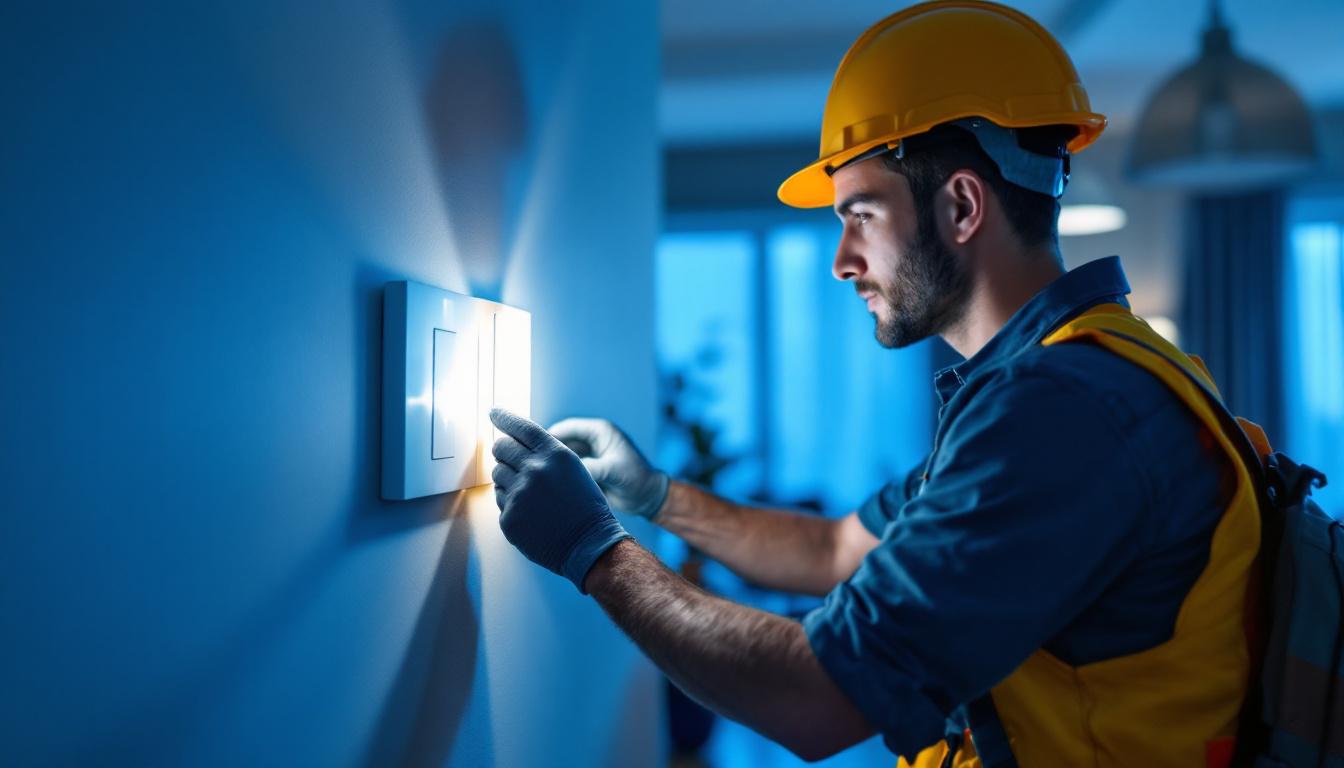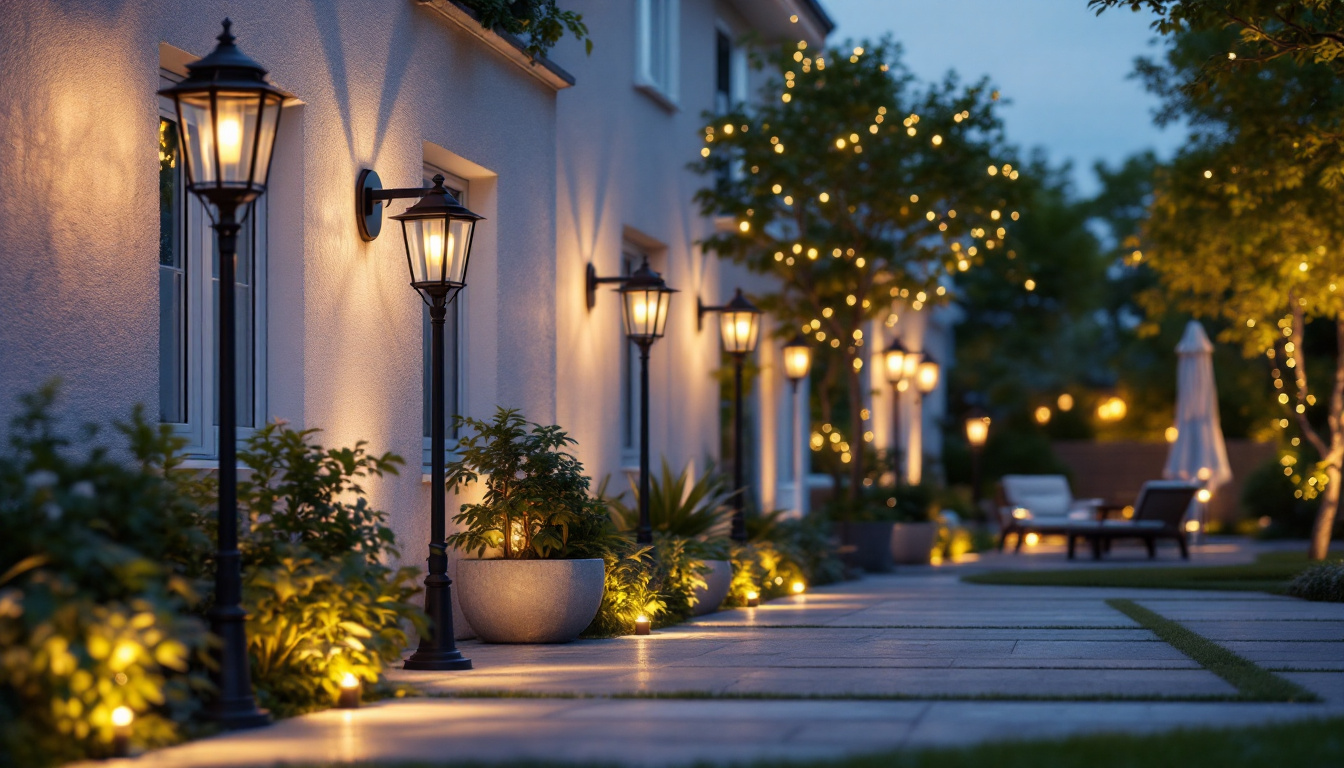
As the demand for effective sanitization solutions continues to grow, UV lighting has emerged as a popular choice among lighting contractors. However, the implementation of UV lighting for sanitization purposes is not without its challenges. This guide aims to help lighting contractors navigate common pitfalls and ensure successful UV lighting installations.
Before delving into the common mistakes made in UV lighting sanitization, it is essential to understand the technology itself. Ultraviolet (UV) light is a segment of the electromagnetic spectrum that has germicidal properties. It is categorized into three types: UVA, UVB, and UVC, with UVC being the most effective for disinfection. UVC light operates at wavelengths between 200 and 280 nanometers, which are particularly effective at disrupting the molecular bonds in the DNA and RNA of pathogens, thereby preventing their replication. This unique ability of UVC light not only makes it a formidable opponent against bacteria and viruses but also highlights its potential in various applications where hygiene is paramount.
UVC light works by damaging the DNA or RNA of microorganisms, rendering them incapable of reproduction and infection. This characteristic makes it a powerful tool in sanitization applications across various industries, including healthcare, food processing, and even residential settings. In healthcare facilities, for instance, UVC light is often employed to disinfect surgical instruments and patient rooms, significantly reducing the risk of hospital-acquired infections. Similarly, in food processing, UVC systems can be used to sanitize surfaces and equipment, ensuring that food products are free from harmful pathogens before they reach consumers.
When considering UV lighting for sanitization, it is crucial to select the appropriate type of UV light. UVC lamps are commonly used for disinfection, but they come in various forms, including mercury vapor lamps, low-pressure mercury lamps, and more modern LED-based solutions. Mercury vapor lamps, while effective, can have longer warm-up times and may require careful handling due to their toxic components. In contrast, low-pressure mercury lamps are more energy-efficient and have a longer lifespan, making them a popular choice for many commercial applications.
Each type has its advantages and disadvantages, such as energy efficiency, lifespan, and effectiveness. Understanding these differences can help contractors make informed decisions that best suit their clients’ needs. Additionally, the emergence of LED-based UV solutions has revolutionized the market, offering a safer, more sustainable option that is both compact and versatile. These advancements not only enhance the effectiveness of UV sanitization but also align with growing environmental concerns, making them an appealing choice for eco-conscious consumers.
UV lighting can be applied in numerous settings, from hospitals and laboratories to schools and public transportation. Each application may require a tailored approach, considering factors such as space, type of pathogens targeted, and the level of exposure required for effective sanitization. For example, in schools, UV lighting can be strategically placed in high-touch areas like classrooms and cafeterias to continuously reduce microbial load, thereby protecting the health of students and staff alike. In public transportation, UV systems can be integrated into ventilation systems to purify the air, effectively reducing the spread of airborne pathogens.
By recognizing the specific needs of each application, contractors can better advise their clients and design systems that maximize the benefits of UV lighting. Moreover, as public awareness of hygiene and sanitation continues to grow, the demand for effective UV solutions is likely to increase. This presents an opportunity for contractors to not only enhance their service offerings but also educate clients on the importance of UV technology in maintaining a safe and healthy environment. By staying informed about the latest advancements and best practices in UV lighting, professionals can ensure they are providing the most effective solutions tailored to their clients’ unique circumstances.
Despite the advantages of UV lighting, many contractors make mistakes during the installation and implementation process. Recognizing these errors can prevent costly setbacks and ensure optimal performance of UV systems.
One of the most significant mistakes is failing to conduct a thorough assessment of the space where the UV lighting will be installed. Factors such as room size, layout, and existing light sources can greatly influence the effectiveness of UV sanitization.
Contractors should evaluate the area’s dimensions and surfaces to determine the optimal placement of UV fixtures. This assessment should also consider potential obstacles that may block UV light from reaching surfaces, as well as the reflective properties of materials in the environment.
Safety is paramount when working with UV lighting. Many contractors overlook the necessary safety protocols that must be in place to protect both the installation team and end-users. UVC light can be harmful to skin and eyes, necessitating the use of protective gear and proper shielding during installation.
Moreover, educating clients about the potential hazards of UV exposure is essential. Contractors should provide clear guidelines on how to safely operate and maintain UV lighting systems, ensuring everyone involved understands the risks and safety measures.
Another common mistake is underestimating the maintenance requirements of UV lighting systems. Like any technology, UV lights require regular upkeep to maintain their effectiveness. This includes routine cleaning of the lamps and fixtures, as dust and grime can significantly diminish UV output.
Contractors should establish a maintenance schedule that includes inspections and cleaning procedures. Providing clients with a maintenance plan can enhance the longevity of the system and ensure consistent sanitization results.
To avoid the pitfalls associated with UV lighting sanitization, contractors should adhere to best practices that promote effective and safe installations.
Training is essential for any contractor involved in UV lighting installation. Comprehensive training programs should cover the principles of UV technology, safety protocols, and maintenance practices. Ensuring that all team members are well-versed in these areas will lead to more successful installations and greater client satisfaction.
Additionally, staying updated on advancements in UV technology and emerging research can further enhance the contractor’s expertise and service offerings.
Leveraging advanced design software can significantly improve the planning and implementation of UV lighting systems. These tools allow contractors to simulate UV light distribution in a given space, helping to identify the best placement for fixtures and the required intensity for effective sanitization.
By utilizing design software, contractors can provide clients with detailed proposals that outline the expected outcomes and demonstrate the effectiveness of the proposed UV lighting solutions.
Educating clients about UV lighting technology and its benefits is crucial for successful installations. Contractors should take the time to explain how UV sanitization works, its effectiveness against various pathogens, and the importance of proper usage and maintenance.
Providing clients with educational materials, such as brochures or instructional videos, can reinforce this knowledge and help them feel more confident in their investment. This proactive approach can lead to better client relationships and increased referrals.
Once UV lighting systems are installed, evaluating their effectiveness is vital to ensure they meet the desired sanitization goals. Several factors should be considered during this evaluation process.
Regular monitoring of UV intensity is essential for determining whether the system is performing as expected. UV intensity can diminish over time due to lamp degradation or environmental factors, making it necessary to conduct periodic assessments.
Contractors should utilize UV intensity meters to measure the output of the fixtures and ensure they are within the recommended levels for effective sanitization. If the intensity falls below acceptable levels, it may be time to replace the lamps or adjust the system’s configuration.
In addition to monitoring UV intensity, evaluating the sanitization outcomes is crucial. This can be achieved through microbial testing of surfaces before and after UV exposure. By comparing the levels of pathogens present, contractors can gauge the effectiveness of the UV lighting system.
Documenting these results not only provides valuable feedback for contractors but also serves as a compelling selling point for clients, showcasing the tangible benefits of UV sanitization.
The field of UV lighting sanitization is continually evolving, with new technologies and methodologies emerging regularly. Staying informed about these trends can help contractors remain competitive and offer cutting-edge solutions to their clients.
One of the most significant trends is the integration of UV lighting systems with smart technology. Smart UV systems can be programmed to operate based on real-time data, such as occupancy levels or air quality measurements. This adaptability enhances the efficiency of sanitization efforts and can lead to energy savings.
Contractors should explore these smart solutions and consider how they can incorporate them into their offerings. Clients are increasingly seeking advanced, automated systems that provide both convenience and effectiveness.
Ongoing research into UV technology continues to unveil new applications and methods for sanitization. For instance, studies are exploring the effectiveness of UV light against emerging pathogens, as well as the potential for using UV in combination with other disinfection methods.
Contractors should stay abreast of these developments and be prepared to adapt their approaches as new information becomes available. This commitment to continuous learning will enhance their credibility and position them as industry leaders.
UV lighting sanitization presents a valuable opportunity for lighting contractors to expand their service offerings and meet the growing demand for effective disinfection solutions. By understanding the technology, avoiding common mistakes, and adhering to best practices, contractors can ensure successful installations that provide significant benefits to their clients.
As the industry evolves, staying informed about emerging trends and advancements will be essential for maintaining a competitive edge. Embracing innovation and prioritizing safety and effectiveness will position contractors for success in the dynamic field of UV lighting sanitization.
Ready to elevate your lighting projects with the most effective UV sanitization technology? Choose LumenWholesale for all your lighting needs and experience the difference that quality, affordability, and convenience can make. Our extensive selection of spec-grade lighting products is designed to meet the highest industry standards, ensuring you deliver reliable, high-performance lighting to your clients. Take advantage of our unbeatable wholesale prices, free shipping on bulk orders, and the ease of cutting out the middleman. Don’t compromise on quality or value — Wholesale Lighting at the Best Value is just a click away.

Explore how LED outside lights are revolutionizing the projects of lighting contractors, enhancing energy efficiency, design flexibility, and sustainability.

Discover how light motion switches are revolutionizing the work of lighting contractors by enhancing efficiency and simplifying installations.

Discover why exterior lighting is crucial for lighting contractors in enhancing safety, aesthetics, and energy efficiency.

Discover how hanging lanterns can transform your outdoor spaces into enchanting retreats.